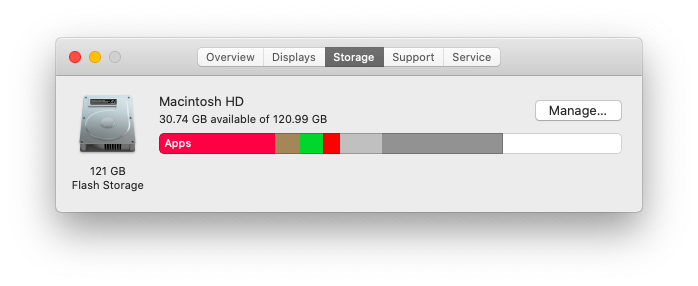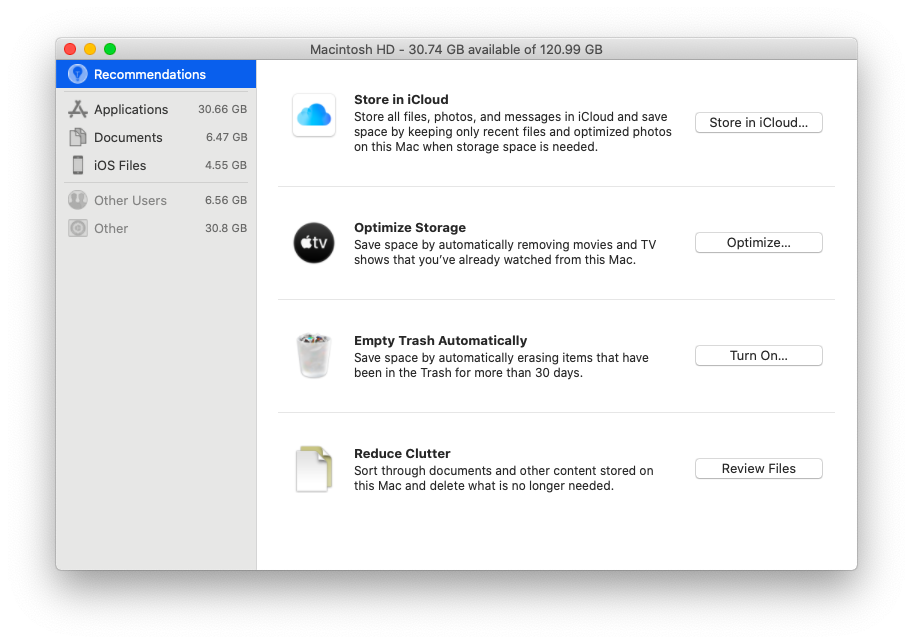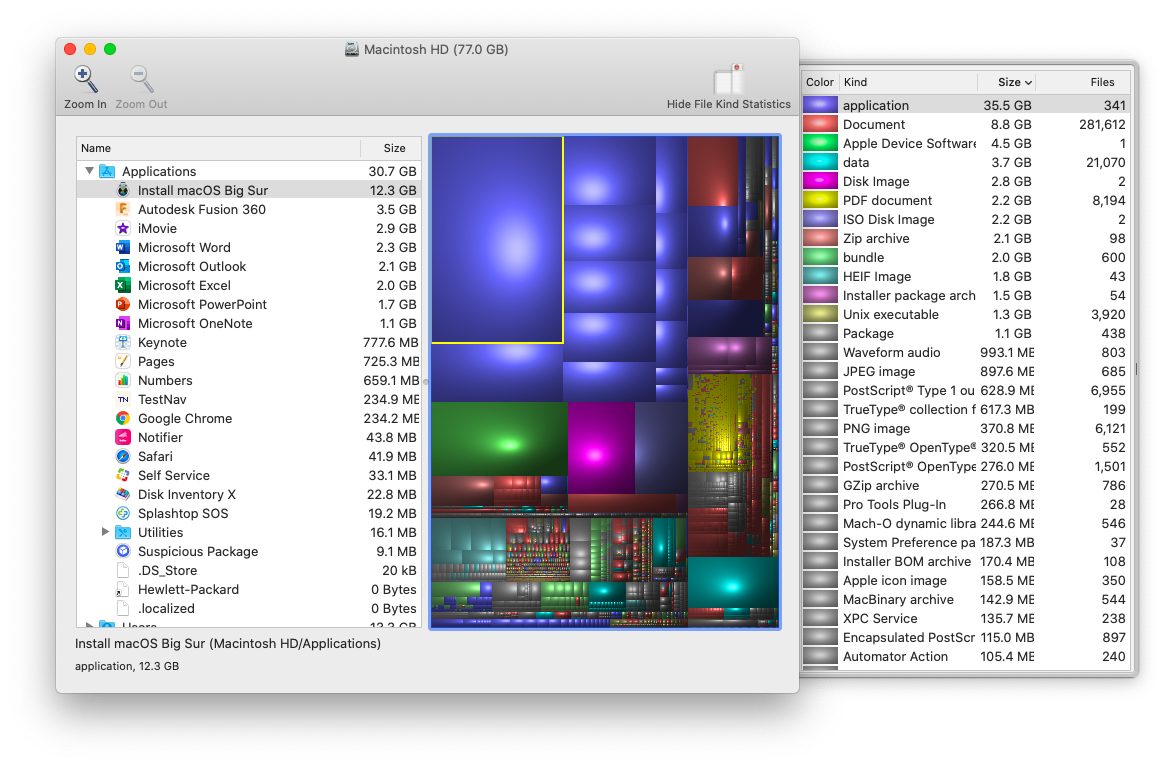Big Sur Upgrade Requires Over 35 GB Free Space
Like many of us during the pandemic, Big Sur has gotten a bit chonky. Not including the over 12 GB installer, it takes 35 GB to upgrade from a previous OS to Big Sur. At the bottom of Apple’s Big Sur Technical Specifications page there’s a note describing storage requirements.
If upgrading from macOS Sierra or later, macOS Big Sur requires 35.5GB of available storage to upgrade. If upgrading from an earlier release, macOS Big Sur requires up to 44.5GB of available storage.
For those with deep pockets buying specced out machines you may think, “What’s the big deal?” Well, an entry level MacBook Air with 128 GB SSD is going to have a bad time. It just so happens that’s almost all of my fleet, and probably most of what exists out in Apple education environments too. The current situation with Big Sur harkens back to iPad (mini) coming stock with 16 GB storage, the reality for 7 years between 2010-2017. It wasn’t until March 2017 when Apple introduced the 5th generation iPad with 32 GB storage that schools rejoiced at finally having sane entry level options. These aren’t rich organization problems, but when economies of scale play out for cash strapped school districts, people take notice.
For a Mac with 128 GB SSD, which is really closer to 121 GB after accounting for recovery partition and similar, 35 GB is a lot of space. Note that’s 35.5 GB (to be exact) with 12.24 GB Big Sur installer, so 47.74 GB total. As of writing this, only 27% of my Mac fleet has ~47 GB free space. Even with Catalina upgrades, which require far less free space, the most common failure is due to lack of storage. As I prepare to move everyone to Big Sur the problem is only going to be exacerbated. Jamf Pro admins can easily identify how many Macs have under 47.74 GB free space by using Boot Drive Available MB criteria in an advanced search or smart group with a value of 47740. In keeping with good IT stewardship, you probably want to start having conversations with those people now to avoid the inevitable help desk ticket later.

startosinstall also reports on how much additional free space is needed when running an upgrade.
test@MacBook-Air ~ % sudo /Applications/Install\ macOS\ Big\ Sur.app/Contents/Resources/startosinstall --agreetolicense
By using the agreetolicense option, you are agreeing that you have run this tool with the license only option and have read and agreed to the terms.
If you do not agree, press CTRL-C and cancel this process immediately.
Error: There is not enough free space on the selected volume to upgrade the OS. An additional 4.81 GB is required.Thankfully, that error message is easy to capture through standard output in a variable with something simple like…
#!/bin/zsh
run_startosinstall=$(/Applications/Install macOS Big Sur.app/Contents/Resources/startosinstall --agreetolicense)
echo $run_startosinstallWhere the output is…
Error: There is not enough free space on the selected volume to upgrade the OS. An additional 4.81 GB is required.
That can then be piped into a dialog window through jamfHelper, Pashua, or AppleScript to let users know precisely how much space needs to cleared out before attempting to upgrade again.
In a perfect world, people would handle file management better. In reality, a lot of users are disorganized, storing every precious file in cascading disarray directly to their Desktop. Apple has its own recommended tool to help free up storage space through System Information > Window > Storage Management or About This Mac > Storage > Manage…


I’m also a big fan of Disk Inventory X since it shows file and folder sizes across an entire disk in a graphical treemap format. The graphical element can help people understand they no longer need their 20 GB Photos library from last year’s Hawaii vacation, or that at least it can be offloaded a personal computer or cloud storage. For both solutions files can be deleted directly from the interface, making it easy to clean up unwanted cruft.

Cloud storage is another excellent solution to free up local disk space. Though not always unlimited, most services have a generous free tier or offer more storage for only a few dollars a month. Google Drive, Microsoft OneDrive, Dropbox, and others might be good solutions depending on what your organization already uses and supports.
My advice - buy the bigger SSD.